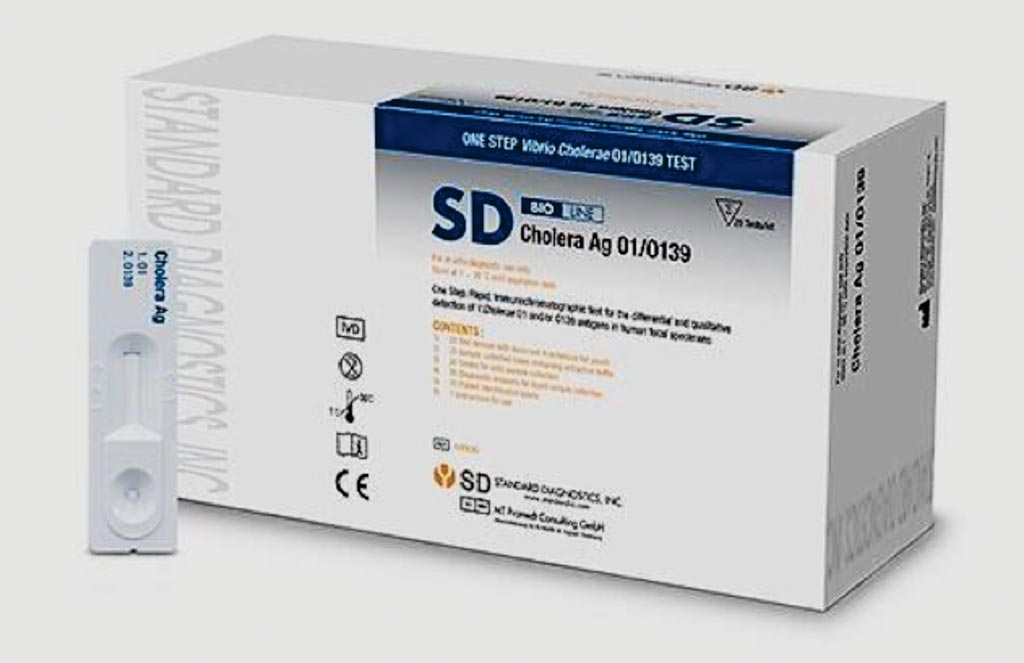Immunochromatographic Rapid Tests Evaluated for Cholera
By LabMedica International staff writers
Posted on 28 Nov 2017
Cholera remains a significant cause of morbidity and mortality worldwide, resulting in an estimated 2.8 million cases and 91,000 deaths annually. Prompt identification of cholera cases facilitates rapid outbreak responses in the short term, while providing reliable surveillance data to guide long-term policies and interventions.Posted on 28 Nov 2017
Microbiological stool culture, the current recognized gold standard for the diagnosis of cholera has significant limitations. Culture to isolate and identify the causative bacterium, Vibrio cholerae, may take up to three days to complete and requires laboratory capacity that is often absent in underserved settings.

Image: The SD BIOLINE Cholera Ag 01/0139 rapid diagnostic test (Photo courtesy of Alere).
An international team of scientists led by those at Harvard Medical School (Boston, MA, USA) carried out a retrospective review of diarrheal disease surveillance records in the Enteric Diseases Laboratory at the study site in Haiti between May 1, 2014 and October 15, 2015. All specimens that underwent both rapid diagnostic testing (RDT) and culture for identification of V. cholerae and had complete records were included in the data collection and analysis.
Three different RDTs were performed, depending on availability, such that some specimens underwent testing with one, two, three, or none of the RDTs. The team compared the results of 511 Crystal VC dipsticks, 129 Artron Vibrio cholerae O139 and O1 Combo Tests and 451 SD Bioline Cholera Ag O1/O139 RDT RDTs to bacterial culture as the gold standard.
The scientists found that of 905 cultures, 477 (52.7%) were positive for V. cholerae O1, of which 27.7% were serotype Inaba. No cultures grew V. cholerae O139. Sensitivity and specificity of Crystal VC were 98.6% and 71.1% respectively. Artron demonstrated a sensitivity of 98.6% and specificity of 69.1%. SD Bioline demonstrated a sensitivity of 81.1% and specificity of 92.8%. Crystal VC and Artron frequently showed false positive O139 bands, whereas none were seen with SD Bioline.
The authors concluded that there is significant variation in the performance of different cholera diagnostic RDTs. Artron and Crystal VC RDTs have high sensitivity and low specificity, while SD Bioline RDT has low to moderate sensitivity and high specificity when performed by laboratory technicians in Haiti. The suboptimal characteristics of these tests limit their use as clinical point-of-care tests; however, they may be useful in outbreak response, surveillance, and research in resource-limited settings. The study was published on November 1, 2017, in the journal Public Library of Science ONE.
Related Links:
Harvard Medical School













